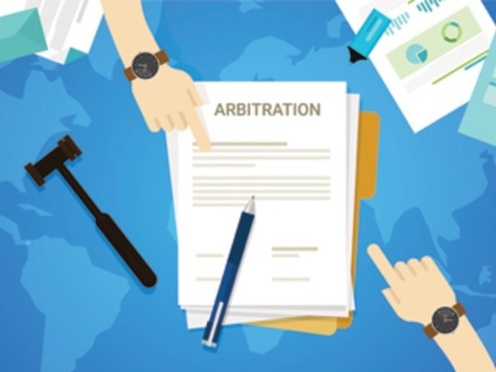 To permit a party that is not a signatory to an arbitration agreement (a “nonsignatory”) to compel arbitration against a signatory has always been controversial in light of the U.S. Supreme Court’s longstanding precedent that arbitration is purely “a matter of consent, not coercion,” and that “[t]he FAA … does not require parties to arbitrate when they have not agreed to do so.” Volt Info. Scis. v. Bd. of Trs., 489 U.S. 468, 478 (1989). Despite this precedent, the doctrine of “equitable estoppel” has been applied to enable a nonsignatory to arbitrate in the absence of express consent. Carroll v. LeBoeuf, Lamb, Greene & MaCrae, 374 F. Supp. 2d 375, 378 (S.D.N.Y. 2005) (“[t]he doctrine … depend[s] upon … considerations of adjudicative economy, not consent”). At its most general level, the doctrine permits a nonsignatory to force a signatory to arbitrate when the issues in dispute relate to a signatory’s contract with another party that contains an arbitration clause. Some courts have criticized the doctrine as nothing more than a docket-clearing device. Other courts have found the doctrine essential to ensure that signatories do not circumvent their agreements to arbitrate through procedural gamesmanship (that is, suing related parties and agents who are not signatories but who should nevertheless benefit from the arbitration agreement).
To permit a party that is not a signatory to an arbitration agreement (a “nonsignatory”) to compel arbitration against a signatory has always been controversial in light of the U.S. Supreme Court’s longstanding precedent that arbitration is purely “a matter of consent, not coercion,” and that “[t]he FAA … does not require parties to arbitrate when they have not agreed to do so.” Volt Info. Scis. v. Bd. of Trs., 489 U.S. 468, 478 (1989). Despite this precedent, the doctrine of “equitable estoppel” has been applied to enable a nonsignatory to arbitrate in the absence of express consent. Carroll v. LeBoeuf, Lamb, Greene & MaCrae, 374 F. Supp. 2d 375, 378 (S.D.N.Y. 2005) (“[t]he doctrine … depend[s] upon … considerations of adjudicative economy, not consent”). At its most general level, the doctrine permits a nonsignatory to force a signatory to arbitrate when the issues in dispute relate to a signatory’s contract with another party that contains an arbitration clause. Some courts have criticized the doctrine as nothing more than a docket-clearing device. Other courts have found the doctrine essential to ensure that signatories do not circumvent their agreements to arbitrate through procedural gamesmanship (that is, suing related parties and agents who are not signatories but who should nevertheless benefit from the arbitration agreement).
The equitable estoppel doctrine is thought to have originated in Hughes Masonry Company v. Greater Clark County School Building, 659 F.2d 836 (7th Cir. 1981), in which the court held that a contractor was “equitably estopped” from denying arbitration against an owner’s construction manager, where the agreement between the contractor and owner specifically identified the construction manager as the entity that would “perform on behalf of the owner.” There was no “estoppel” in the traditional sense (estoppel usually requires some form of detrimental reliance), but the court invoked the “estoppel” mantra to conclude that the contractor could not “repudiate[e]” the arbitration provision of its agreement with the owner. Over time, courts have expanded the doctrine significantly, making it possible for any defendant in a multi-defendant fraud case to latch on to another defendant’s arbitration agreement, in a game of connect-the-dots. See, e.g., Camferdam v. Ernst & Young Intern., 2004 WL 307292 (S.D.N.Y. Feb. 13, 2004).






